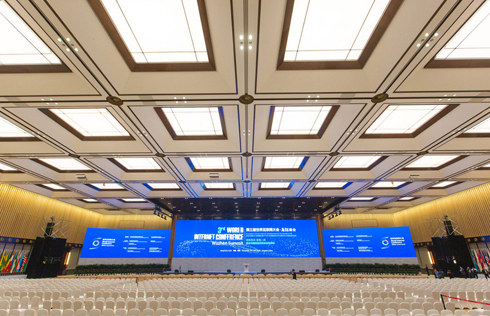No basis for sustained yuan depreciation
BEIJING - China's yuan fell for a ninth consecutive day on Wednesday, but experts believe there is no basis for substantial depreciation in the longer term.
The central parity rate of the yuan weakened 97 basis points to 6.8592 against the dollar, according to the China Foreign Exchange Trading System.
It is the yuan's weakest level against the dollar in over eight years, and the longest losing streak since December 2015.
The recent yuan depreciation is partly due to stronger expectations of an interest rate increase by the US Federal Reserve, said Zhong Yue, analyst at Forextime Ltd, a global online foreign exchange transaction provider.
Political uncertainties have eased in the United States after Donald Trump defeated Democratic candidate Hillary Clinton in the presidential election, leading to a stronger dollar and an expectation of a US interest rate hike.
China's economy expanded 6.9 percent in 2015, the slowest pace in a quarter of a century. Despite signs of stabilizing in recent months, the country is still having a hard time managing an increasingly overheated property market and stemming capital outflows.
Trade relations with the US are expected to be dreary as Trump has threatened a 45-percent tariff on imports from China.
Facing uncertainty in China-US trade, it is possible that China may take the opportunity to release the pressure in advance, allowing the yuan to weaken somewhat as the dollar rises, said Huili Chang, analyst at China International Capital Corp.
Yu Yongding, economist and former central bank advisor, applauded the central bank for decreased intervention in the yuan's exchange rate, saying it will help ensure monetary policy independence.
"There is no need to fear the depreciation of the yuan. Currently, the benefits of a weaker yuan outweigh the downsides, as a weaker yuan is conducive to boosting exports and curbing capital outflows," Yu added.
Last week, trade data showed China's exports and imports fell year on year in October due to weak domestic and global demand.
China has the world's largest currency stash. It fell to $3.12 trillion at the end of October, down $45.7 billion from a month earlier, marking the lowest level since March 2011. However, a stronger dollar accounts for much of that change.
Looking ahead, the yuan may come under short-term pressure but have limited room for further weakening.
Analysts also ruled out the possibility of substantial depreciation in the longer term as China continues to witness steady economic growth, progress in economic restructuring and a stable financial market.
"There is no basis for a sustained depreciation trend for the yuan, and we maintain the forecast of 6.98 for the end of 2017," Chang said.
Because there is enough fuel in the tank to achieve the government's target of 6.5 to 7 percent economic growth for the year, analysts also think room for further monetary easing is limited.
In China's spot foreign exchange market, the yuan is allowed to rise or fall by 2 percent from the central parity rate each trading day. The central parity rate of the yuan against the dollar is based on a weighted average of prices offered by market makers before the opening of the interbank market each business day.























